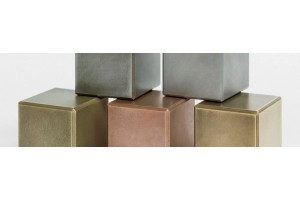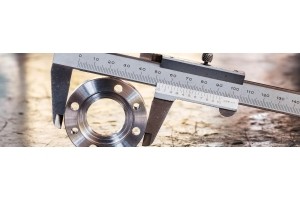- Material
-
- Aluminium 61
- Brass 8
- Stainless Steel 8
- Galvanised Steel 1
- Mild Steel 1
How to Measure & Mark Metal for Precise Cuts Every Time
Precision is crucial when working with metal. Whether you are cutting aluminium for a DIY project or preparing stainless steel for a professional job, this one thing is sure. Accurate measuring and marking ensure that every cut is flawless and fits your exact specifications. There is nothing more frustrating than measuring and marking your metal, only to find your cuts are off. Even minor errors can lead to wasted materials and costly mistakes.
However, the good news is that it does not have to be that way. In this guide, we walk you through the essential tools and best practices for measuring and marking metal with accuracy. By following these proven techniques, you can avoid common mistakes and achieve perfect cuts every time.
Whether you are working with brass, stainless steel, or mild steel, these tips will give you the confidence to get the job done right the first time.
Essential Tools for Measuring & Marking Metal
To achieve accuracy when measuring and marking metal, having the right tools is essential. These tools not only ensure your measurements are correct but also help you mark the metal clearly and precisely before cutting.
The UK’s metal manufacturing sector contributes £1.7 billion to the economy each year, according to the House of Commons Library. This sector relies on precision measurement tools to maintain high quality and minimise costly errors.
Tape Measure
A retractable steel tape measure is an essential tool for any metalworking project. It offers flexibility and precision. This is especially appropriate for large pieces of metal, such as aluminium sheets or stainless steel structures. Choose a tape measure with a locking mechanism. This feature gives you stability when measuring longer lengths, keeping the tape in place as you mark.
Callipers
Digital or dial callipers are invaluable for precise thickness measurements. When working with brass, mild steel, or aluminium, callipers are essential tools. They measure metal with precision, down to a fraction of a millimetre, and this level of accuracy is crucial for custom metal projects. For example, measuring the exact thickness of an aluminium plate before cutting ensures you won’t lose any material or accuracy.
Marking Knife
A marking knife leaves sharp, permanent lines on metal. This ensures your marks are easily visible while cutting. Unlike pencils or markers, marking knives leave fine, deep grooves that won’t smudge. This tool is handy when working with stainless steel or mild steel, where visibility can be a challenge.
Combination Square
The combination square is a versatile tool that allows you to measure right angles and check that your metal is aligned correctly. It is perfect for ensuring your cuts are straight and true, especially when working with aluminium plates or metal angles. Use it to mark both 90° and 45° angles and ensure accuracy in all your cuts.
Scriber Tool
A scriber tool is perfect for creating permanent lines on metal surfaces. It is beneficial for stainless steel or mild steel, where traditional pencils can be difficult due to the smooth surface. The fine line created by a scriber will guide your cuts precisely, making it an essential tool for high-precision metalwork.
Common Mistakes to Avoid When Measuring & Marking Metal
Even experienced metalworkers can run into issues if they do not take care with their measurements and markings.
Misreading Measurements
A frequent error is misreading measurements. This often occurs with tools such as callipers or tape measures. Even a slight discrepancy can lead to costly mistakes, resulting in misaligned cuts and wasted materials. The Health and Safety Executive (HSE) states that human error is the primary cause of nearly all workplace accidents. Double-check your measurements before cutting, and ask a colleague or friend to verify them for extra peace of mind. This simple step can save you a lot of time and frustration in the long run.
Using the Wrong Tool for the Job
Using the wrong tool for a specific task can lead to inaccurate readings and frustrating results. For example, using a steel ruler to measure thickness rather than a calliper can give you unreliable readings. Similarly, don’t rely on a pencil to mark stainless steel. Use a marking knife or scribe tool for more accurate, permanent markings. Each tool serves a distinct purpose, so ensure you use the right one for each task to avoid errors.
Ignoring Surface Preparation
The condition of the metal surface can greatly affect your marking accuracy. Dust, oil, or rust on the surface can make it difficult to create clear marks, leading to smudging or faded lines. Always clean the metal surface before measuring and marking. For instance, wiping down brass or stainless steel plates with a clean cloth removes any debris. This helps ensure you get the sharpest, clearest lines possible.
Not Using a Guide for Straight Cuts
Without a proper guide, even the best markings can result in uneven cuts. A straight edge or T-square is crucial when making cuts along a marked line. When cutting metal sheets or bars, use a straight guide. It keeps your cuts straight and true, which is vital for larger pieces.
Master Precision in Metalworking with Accurate Measurements
Achieving perfect cuts in metalwork starts with precision. When working with aluminium, stainless steel, or brass, accurate measuring and marking are crucial for an ideal fit. Using tools like scribe tools, callipers, and combination squares helps you avoid mistakes. This way, you can achieve flawless results with precision measurements and clear markings every time.
Now that you have the techniques to measure and mark metal with confidence, it is time to start your next project. Whether you need cut-to-size metal sheets or precision tools, come to us. Clickmetal is here to support your work with high-quality materials.
Call 01794 526090, get in touch and explore our cut-to-size metal sheets today.












